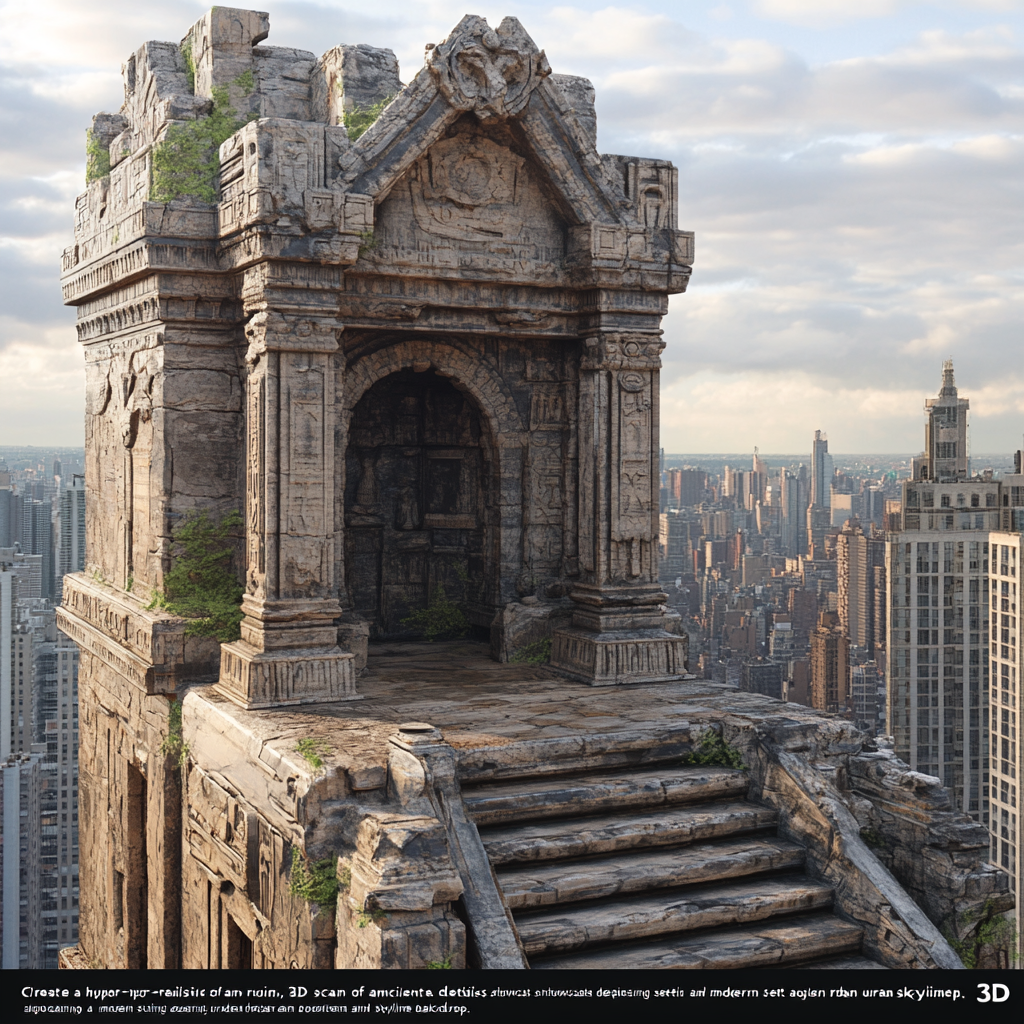
Enhancing Clarity & Depth for Complex Structures with 3D Object Scanning
In the wild and whimsical world of technological marvels, one astonishing leap has strutted right into the limelight: 3D object scanning has unveiled a curtain of possibilities that paints complexity in the glorious hues of clarity and depth perception. This brainchild of researchers at Ritsumeikan University marks a golden sunrise in the realms of photogrammetry and laser technology. Forget clunky scans that can leave the intricacies of ancient monuments or convoluted mechanical parts muddled; this innovation is here to refresh our perception and understanding.
Ah, the woe of intricate designs—those beautiful tapestries of structures that beckon to be seen, the kind that trips a technician's heart rate from the excitement, yet bogs them down in frustration. Have you ever gazed at an elaborate architectural wonder or that ancient temple cradled by the sands of time, only to wonder if someone, somewhere, truly captured its essence? It turns out traditional scanning methods have been something of a soggy biscuit—promising a crunchy exterior but delivering a frustratingly bland core. Misaligned images? Missing textures? Yawn. But hold onto your hats, dear reader! We are hurtling into the future, where new 3D object scanning technology promises to dig deeper and rise higher.
So what's the magic potion? It’s a wonderland of cutting-edge advancements! We start with the ever-vibrant photogrammetry—yes, the alchemical process that breathes three-dimensional life into flat photographs. Scientists in lab coats have waved their wands and, voilà! New algorithms and techniques now serve up higher-resolution photographs that align with the precision of a Swiss watch. This means no more ‘meh’ scans that just skim the surface; oh no, we’re talking about ultra-detailed 3D models that show complexity in all its divine, intricate glory.
Now, let’s dissect the illustrious laser scanning technology, shall we? Think of it as the superhero of scanning—cape and all—capturing complex structures in breath-taking detail. High-resolution laser scanners are akin to having an eagle-eye view of the most intricate details known to mankind (or at least to those of us who own old car parts). This detail-hungry apparatus can unveil lace-like textures and the fine strokes that other methods could easily overlook. Imagine a meticulous painter trying to recreate the Mona Lisa but forgetting to add the twinkle in her eye. That’s how many previous scanners have performed—almost.
But the pièce de résistance of this technological feast is the convergence of both worlds. Picture this: photogrammetry and laser scanning, two fierce competitors, have shaken hands to create a merger that would make even Wall Street weep with envy. Together, they conjure 3D models so rich and accurate, you might feel the urge to reach out and adjust a loose tile on that ancient structure or brush the dust off a rusted gear. A hybrid approach? Oh, yes, please!
You might now ask, “Well, how does this magic work?” Allow me to guide you through the enchanting process. First, we collect data like hungry little squirrels gathering acorns. Photographs are snapped from various angles with the flamboyance of a fashion model strutting down the catwalk. Add in reliable laser scanners—those precision-loving gadgets—and you’ve got the makings of rich data supplements, ready to tell a multifaceted tale.
Next comes the processing stage, where the real fun begins. High-tech software swoops in to form a preliminary 3D model. And here’s where our laser scanners join the party, filling in the blanks from the scattering of previously captured data. Like a fine wine, the model is refined with numerically powerful algorithms, aligning everything into a seamless creation—a vision so crisp, so detailed, it would make Michelangelo raise his chisel in approval!
But wait, there’s more! Add textures and colors, and we’ve taken a leap well beyond the dull monochrome world. Imagine witnessing the iridescence of marble or the gleaming rust on a forgotten relic.
Now, let’s be real for a moment and look at the vast horizon this breakthrough sprawls before us. The impact? Earth-shattering! Try to wrap your brain around the possibilities: Archaeologists, historians, architects, and urban planners all stand to benefit significantly. Researchers now have the means to preserve ancient sites with the kind of detail that could charm a time traveller. Imagine reconstructing a historical wonder with exactitude that even history would approve!
When engineers and architects are tasked with detailed 3D models of complex structures, it’s like offering them a crystal ball that predicts exactly how to build and maintain without breakage or hitches. Less waste? Check. Cost-efficiency? Check. Improved safety? Triple check! It paves the way for more robust projects, with all those pesky hurdles of miscalculations and misinterpretations tossed to the curb like out-of-date software.
Urban planners, on the other hand, get a smorgasbord of data wrapped in spectacular models that help navigate the complexities of city life. Better planning, smarter infrastructure, flourishing public services—it’s like giving those charming city maps a thorough makeover.
So, what does this technology look like in action? Picture this:
- Data Collection: Various high-resolution photos are captured with the meticulousness of a paparazzi chasing a celebrity, complemented by laser scans that carefully document every contour, nook, and cranny.
- Data Processing: Advanced software swooshes in like a skilled DJ mixing tunes, seamlessly integrating images and laser data into a beautiful collaborative choreography of 3D expertise.
- Model Refinement: Just like a master sculptor adding the final touches to a statue, these refined digital models come alive, imbued with the spark of realism.
The sheer brilliance of this innovation in 3D object scanning tells a story of human determination, creativity, and an insatiable thirst for understanding our world—and beyond. As we keep pushing boundaries, it will be fascinating to see how this technology revolutionizes fields from archaeology to urban design.
Curiosity piqued? Want the latest scoop on technological breakthroughs and innovative solutions that are currently changing the landscape of our world? Stay savvy and subscribe to our Telegram channel: @channel_neirotoken. Remember, keeping up with these transformations could very well shape the future you are a part of!

